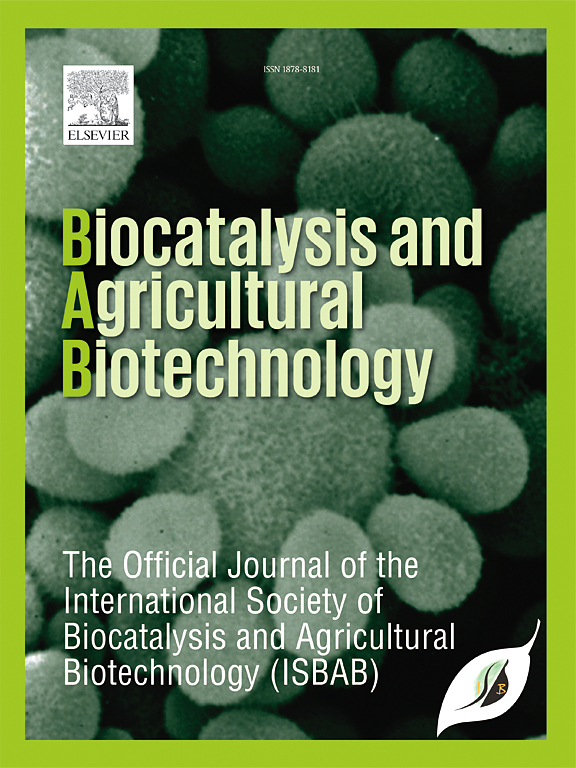Comparative evaluation of pyrene degrading potential of three gram-negative bacterial strains: Acinetobacter baumannii BJ5, Acinetobacter pitti NFL, and Enterobacter cloacae BT
IF 3.4
Q2 BIOTECHNOLOGY & APPLIED MICROBIOLOGY
引用次数: 0
Abstract
In recent years, the presence of Polycyclic Aromatic Hydrocarbons (PAHs), such as pyrene, exhibiting toxic behaviour towards microbes, flora, fauna, and humans, has escalated significantly. Notably, this research has exploited the remarkable capabilities of Acinetobacter baumannii BJ5, Acinetobacter pitti NFL, and Enterobacter cloacae BT to investigate the dynamics of pyrene mineralization, at substantially high-concentration over a range of 600–1000 mg/L concentration. Investigating biochemical pathways in biodegradation is crucial for understanding the intricate mechanisms underlying the growth, degradation, and environmental adaptation of the microorganisms. In the present study, metabolites generated during pyrene mineralization in E. cloacae BT were identified implicating phthalic acid pathway mediated biodegradation. The decomposition of pyrene by E. cloacae BT succeeded via initial ring oxidation and subsequent dehydrogenation to yield phthalic acid and pyrocatechol as the key intermediates. This research enhances our knowledge of pyrene degradation mechanisms in gram-negative bacteria, paving the way for proactive strategies to improve its removal from the contaminated environments.
鲍曼不动杆菌BJ5、皮蒂不动杆菌NFL和阴沟肠杆菌BT三种革兰氏阴性菌株芘降解潜力的比较评价
近年来,多环芳烃(PAHs),如芘,对微生物、植物、动物和人类的毒性行为显著增加。值得注意的是,本研究利用鲍曼不动杆菌BJ5、皮蒂不动杆菌NFL和阴沟肠杆菌BT的卓越能力,在600-1000 mg/L的高浓度范围内研究芘矿化的动力学。研究生物降解中的生化途径对于理解微生物生长、降解和环境适应的复杂机制至关重要。在本研究中,阴沟芽孢杆菌在芘矿化过程中产生的代谢物被鉴定出与邻苯二甲酸途径介导的生物降解有关。阴沟藻土杆菌通过初始环氧化和随后的脱氢反应成功分解芘,生成邻苯二甲酸和邻苯二酚作为关键中间体。本研究提高了我们对革兰氏阴性菌中芘降解机制的认识,为积极主动地提高其从污染环境中去除的策略铺平了道路。
本文章由计算机程序翻译,如有差异,请以英文原文为准。
求助全文
约1分钟内获得全文
求助全文
来源期刊

Biocatalysis and agricultural biotechnology
Agricultural and Biological Sciences-Agronomy and Crop Science
CiteScore
7.70
自引率
2.50%
发文量
308
审稿时长
48 days
期刊介绍:
Biocatalysis and Agricultural Biotechnology is the official journal of the International Society of Biocatalysis and Agricultural Biotechnology (ISBAB). The journal publishes high quality articles especially in the science and technology of biocatalysis, bioprocesses, agricultural biotechnology, biomedical biotechnology, and, if appropriate, from other related areas of biotechnology. The journal will publish peer-reviewed basic and applied research papers, authoritative reviews, and feature articles. The scope of the journal encompasses the research, industrial, and commercial aspects of biotechnology, including the areas of: biocatalysis; bioprocesses; food and agriculture; genetic engineering; molecular biology; healthcare and pharmaceuticals; biofuels; genomics; nanotechnology; environment and biodiversity; and bioremediation.
 求助内容:
求助内容: 应助结果提醒方式:
应助结果提醒方式:


